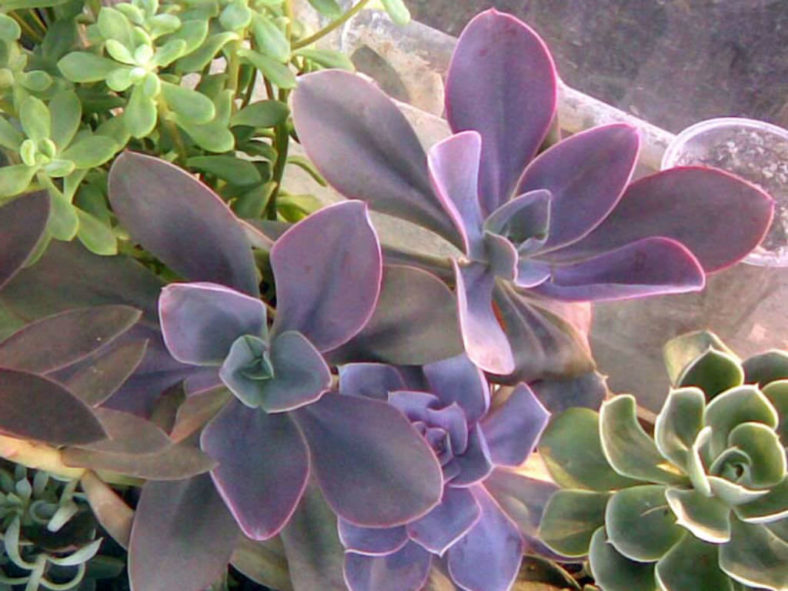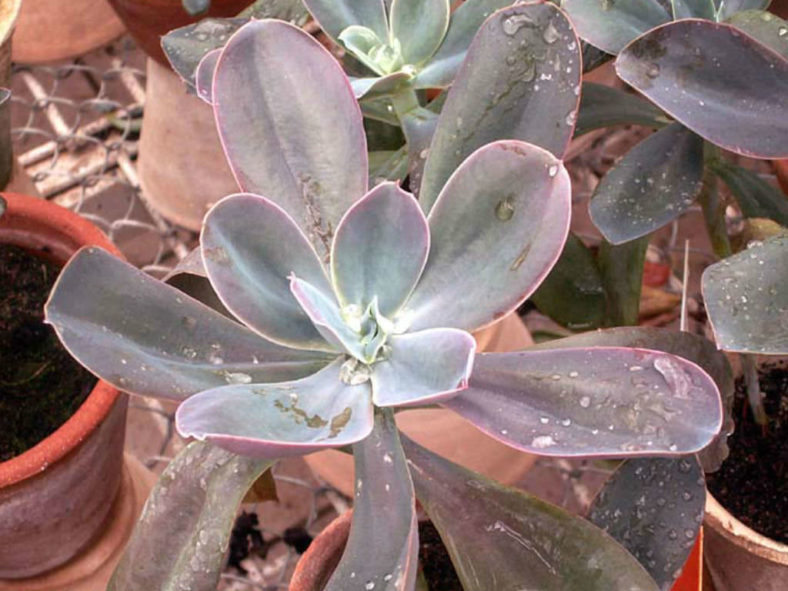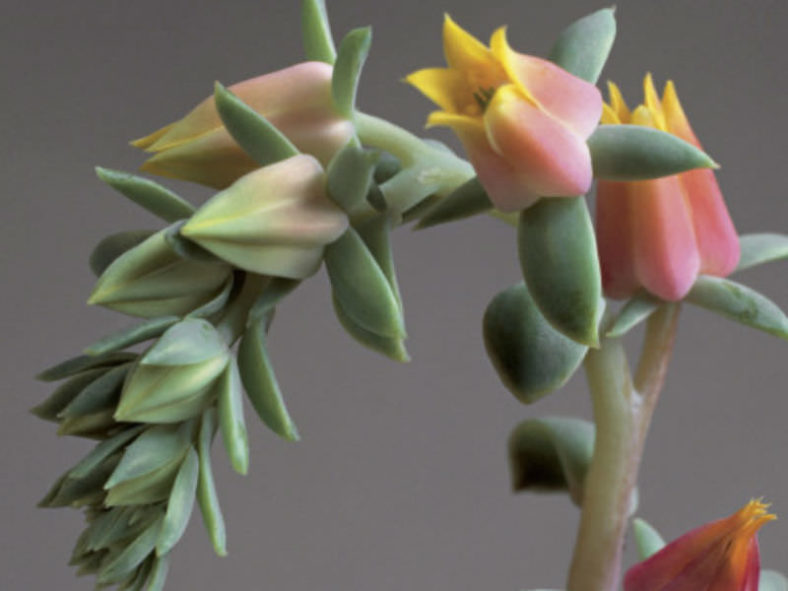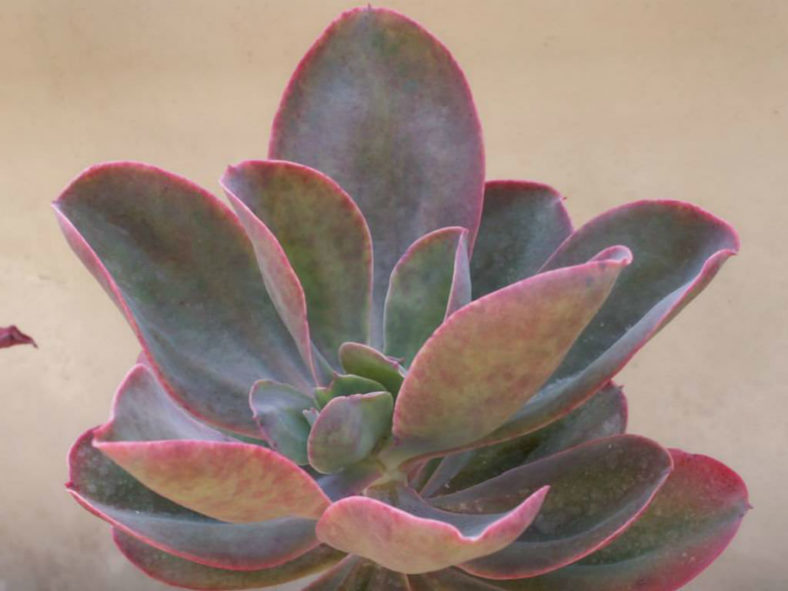Scientific Name
Echeveria gibbiflora 'Metallica'
Common Name(s)
Metallic Echeveria
Synonym(s)
Echeveria gibbiflora var. metallica, Echeveria metallica, Echeveria 'Metallica'
Scientific Classification
Family: Crassulaceae
Subfamily: Sempervivoideae
Tribe: Sedeae
Genus: Echeveria
Origin
Echeveria gibbiflora 'Metallica' was first described and named in 1863 by Lemaire from a plant in cultivation. It is an open question whether it is a true species, cultivar, or a hybrid produced in cultivation.
Description
Echeveria gibbiflora 'Metallica' is a beautiful succulent that forms short-stemmed rosettes of glaucous green leaves edged purplish lilac when young, becoming brownish-bronzy-green as they age. The leaves are spoon-shaped, rounded towards the apex, and tipped with a small acute point. They are up to 7.5 inches (19 cm) long and 5.5 inches (14 cm) wide.
The flowers are bell-shaped, reddish, and yellow inside and appear in racemes in summer.

Hardiness
USDA hardiness zones 9b to 11b: from 25 °F (−3.9 °C) to 50 °F (+10 °C).
How to Grow and Care
Most common Echeveria species are not complicated succulents to grow, provided you follow a few basic rules. First, be careful never to let water sit in the rosette as it can cause rot or fungal diseases that will kill the plant. Additionally, remove dead leaves from the bottom of the plant as it grows. These dead leaves provide a haven for pests, and Echeverias are susceptible to mealy bugs. Finally, as with all succulents, careful watering habits and plenty of light will help ensure success.
Repot as needed, preferably during the warm season. To repot a succulent, ensure the soil is dry before repotting, then gently remove the pot. Knock away the old soil from the roots, removing any rotted or dead roots. Treat any cuts with a fungicide.
Most Echeverias can be easily propagated from leaf cuttings, although some are better from seeds or stem cuttings. To propagate a leaf cutting, place the individual leaf in potting soil for succulents and cover the dish until the new plant sprouts.
See more at How to Grow and Care for Echeveria.
Hybrids
Links
- Back to genus Echeveria
- Succupedia: Browse succulents by Scientific Name, Common Name, Genus, Family, USDA Hardiness Zone, Origin, or cacti by Genus
Photo Gallery
Click on a photo to see a larger version.



